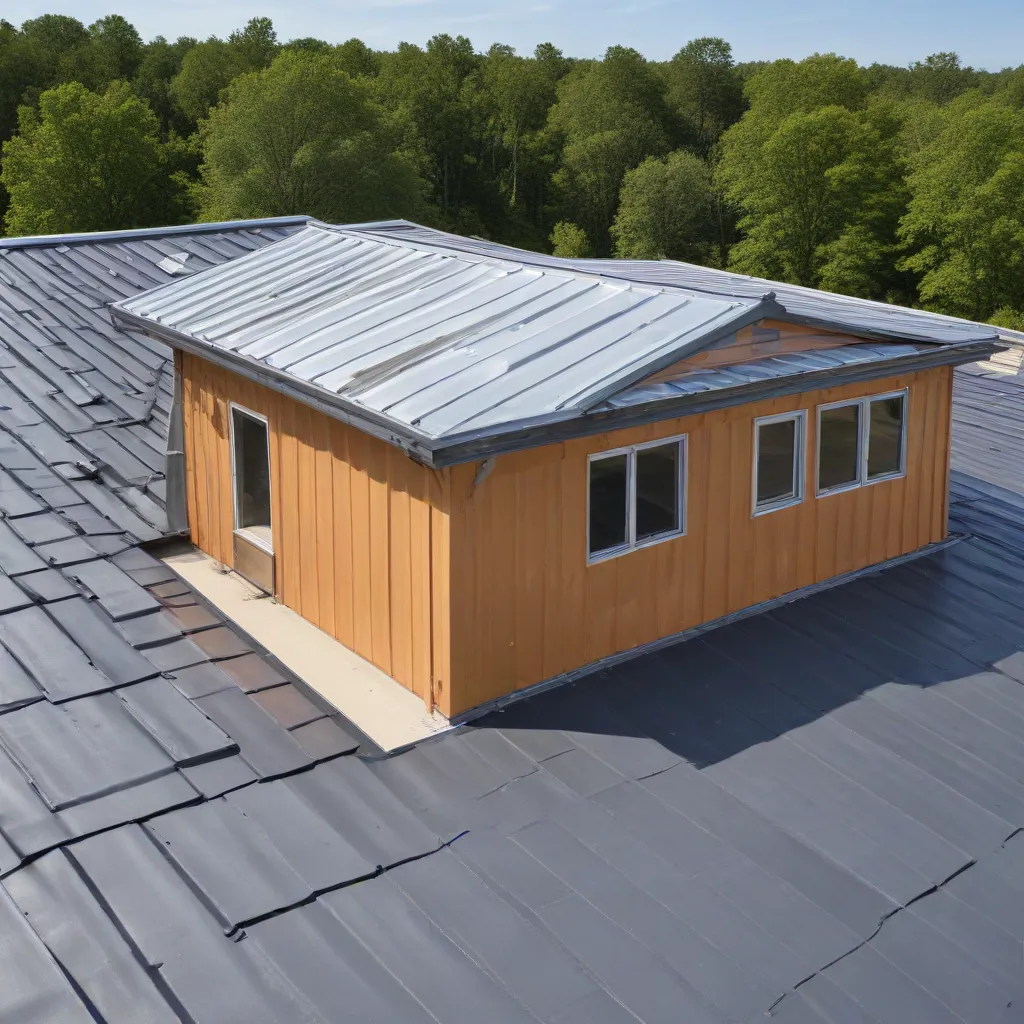
As an experienced roofing specialist for Genuine Roof Systems, I’ve witnessed firsthand the growing demand for energy-efficient building solutions. One area that has captured considerable attention is the retrofitting of metal roofs to enhance their thermal performance and sustainability.
Roof Structure and Materials
Roof Types and Characteristics
The roof of a building is not just a protective layer – it’s a crucial component that can significantly impact the structure’s overall energy efficiency and aesthetic appeal. When it comes to roof types, metal roofs have gained significant popularity due to their durability, longevity, and versatility.
Metal roofs can come in a variety of forms, such as standing seam, metal shingles, or metal tiles. These roofing systems offer an impressive lifespan, often lasting 40 to 70 years with proper maintenance. Additionally, metal roofs are highly resistant to fire, water, and impact, making them an excellent choice for homes and commercial buildings in various climates.
Metal Roof Construction
The construction of a metal roof typically involves two metal sheets with a rigid insulative foam core sandwiched between them. This design, known as insulated metal panels (IMPs), provides exceptional thermal performance, with an R-value (a measure of thermal resistance) ranging from R7 to R8 per inch. In comparison, other common insulation materials offer lower R-values, such as R5 for extruded polystyrene and R3 for mineral fiber.
Insulation and Weatherproofing
The insulative core of IMPs not only enhances thermal efficiency but also serves as a comprehensive air, water, and vapor barrier. This integrated approach to the building envelope helps to eliminate thermal bridging and ensures a tighter, more weather-resistant structure.
Energy Efficiency Considerations
Thermal Performance
One of the primary benefits of retrofitting a metal roof is the potential for significant energy savings. The high insulative value of IMPs can substantially reduce heat transfer through the roof, leading to lower heating and cooling costs for the building. This is especially important in regions with extreme temperatures, where the insulation can help maintain a comfortable indoor environment year-round.
Ventilation and Air Sealing
In addition to the insulative properties, the design of metal roofing systems can also contribute to improved ventilation and air sealing. The seamless construction of IMPs, combined with strategically placed vents and sealants, can minimize air infiltration and exfiltration, further enhancing the building’s energy efficiency.
Solar Reflectance
Many metal roofing products are designed with a high solar reflectance, which means they can effectively reflect a significant portion of the sun’s energy. This feature, known as the solar reflectance index (SRI), can help reduce the amount of heat absorbed by the roof, leading to lower cooling demands and energy consumption.
Retrofitting Strategies
Roof Replacement
One approach to improving the energy efficiency of a building with an existing metal roof is to completely replace the roof system. This involves removing the old roof and installing a new, high-performance metal roof system. While this option can be more costly upfront, it offers the opportunity to optimize the roof’s thermal performance, incorporate the latest energy-efficient technologies, and potentially extend the building’s lifespan.
Insulation Upgrades
An alternative to a full roof replacement is to retrofit the existing metal roof with additional insulation. This can be achieved by installing a new metal roof system over the existing one, creating a double-roof assembly. The space between the two roof layers can be filled with continuous insulation, further enhancing the overall thermal performance of the roof assembly.
Reflective Coatings
Another cost-effective retrofitting strategy is the application of reflective roof coatings. These specialized coatings can be applied directly to the existing metal roof, effectively increasing its solar reflectance and reducing the amount of heat absorbed by the building. This approach is particularly beneficial for roofs that are in good condition but lack the desired energy-efficiency characteristics.
Benefits of Retrofitting
Reduced Energy Costs
The primary advantage of retrofitting a metal roof for improved energy efficiency is the potential for substantial cost savings on heating and cooling expenses. By reducing the amount of heat that enters or escapes the building, the HVAC system can operate more efficiently, leading to lower utility bills and a better return on investment over the long term.
Improved Comfort
In addition to the financial benefits, a well-insulated and energy-efficient metal roof can also enhance the comfort of a building’s occupants. By maintaining more consistent indoor temperatures, the retrofitted roof can help create a more comfortable and enjoyable living or working environment, improving the overall quality of the space.
Environmental Impact
Retrofitting metal roofs for enhanced energy efficiency also has a positive impact on the environment. By reducing the building’s energy consumption, the carbon footprint is lowered, contributing to a more sustainable future. Moreover, the metal roofing materials used in these retrofits are often highly recyclable, further supporting the circular economy and minimizing waste.
As the demand for sustainable building practices continues to grow, the retrofitting of metal roofs to improve energy efficiency is becoming an increasingly popular and viable solution. By leveraging the inherent benefits of metal roofing systems and incorporating the latest insulation and coating technologies, building owners and managers can unlock significant cost savings, enhance occupant comfort, and reduce their environmental impact. If you’re considering a metal roof retrofit for your building, be sure to explore the wide range of genuine roofing solutions available from Genuine Roof Systems to ensure a successful and energy-efficient outcome.

























